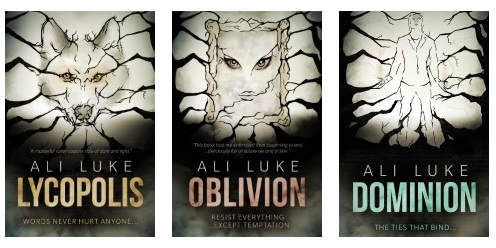Five Powerful Ways to Make Your Novel’s Plot More Complex

Is your novel’s plot complex enough?
If you’ve drafted a novel and you’re done in 50,000 words when you were aiming for 80,000, or if the pacing feels wrong – perhaps not much happens and you’ve dragged out simple scenes for page after page – then you may need a more complex plot.
When you’re drafting, you might be very focused on the main plot of your story, leaving subplots for the redraft. Or you may think you have plenty of plot to begin with … only to find yourself running short part way through the book.
As author Elana A. Mugdan put it on Twitter:
You don’t want to start throwing random complications into your plot for the sake of it, though: this could lead to your novel feeling like a disparate collection of separate pieces instead of a cohesive whole.
We’re going to take a look at how to add complexity to your plot, with plenty of different methods to try. But first …
Does Your Plot NEED to Be More Complex?
Before we go too far, it’s important to recognise that not all novels need to have a complicated plot.
Literary fiction, for instance, can be very much focused on the characters’ interior thoughts and beautiful writing – rather than on lots of things happening.
In more commercial fiction, you might be writing in a genre that tends to have quite straightforward plots: romance novels, for instance, might involve some emotional twists and turns but readers won’t expect a complex plot with lots of threads to keep track of.
If you do feel like you need more plot though, here are five methods you can try.
#1: Put an Extra Roadblock in Your Main Character’s Way
Perhaps, in your draft, your protagonist has a problem that they resolve fairly quickly. Maybe they need extra money in Chapter 3, but they take on an extra job in Chapter 4 and they quickly earn enough.
You could potentially make it harder for your character to solve their problem. Maybe:
- Your character loses their second job (or even their first job) – making their money problems even worse.
- Your character’s new job solves the money problem – but it leads to a new problem, like conflict with an unpleasant coworker.
- Your character oversleeps and is running late for their shift – then their car won’t start.
Ideally, you don’t want to just throw roadblocks into your story for the sake of it. Instead, you want to choose something that explores your story’s theme, helps to reveal or develop character, or feeds into some other part of the plot.
#2: Use Your Character’s Past Against Them
Is there something – or someone – from your character’s backstory that could cause trouble for them?
Maybe there’s a character who knows a secret of theirs from long ago, or a family member who’s in a position to cause difficulties for them.
Perhaps some trauma they’ve suffered in the past is still affecting their life, in ways that are hindering them from reaching their goal.
#3: Give Your Character a False Success
Plots often involve some kind of false triumph over the story’s antagonist, where your character thinks they’ve succeeded … only to fail (often creating an even bigger hurdle for them to jump).
Maybe they’re going for a big promotion at work and they’ve had it verbally confirmed. But when they arrive in the office early the next morning, they find that their nemesis has been given the role instead – due to some shady shenanigans that the protagonist now needs to uncover.
Or maybe, your protagonist and their plucky friends have defeated the evil villain … only to realise that there was a bigger, darker evil lurking in the shadows all along. The villain they’ve been struggling against so far was just a front, and now they need to unmask the real evil.
Or maybe your detective has seemingly caught the master criminal red-handed … but now they’ve discovered that the criminal has managed to turn the tables, planting evidence that implicates the detective in a terrible crime instead.
False successes can raise the narrative stakes dramatically – giving your story’s eventual ending an even bigger emotional pay-off.
#4: Dig Into a Different Character’s Point of View
Your story might be from one character’s perspective, or you might have created a dual narrative – but it still pays to think about another character’s point of view.
This doesn’t necessarily mean head-hopping into their perspective during the story itself. Instead, you could just brainstorm about what might be happening for this character while the “on page” action is taking place.
For instance, if you’ve written a romance novel that’s all from the heroine’s perspective, perhaps she and the hero have temporarily broken up after a misunderstanding has led to a huge argument. What exactly is the hero doing while she mopes at home? Figuring this out could lead you to deepen the plot.
You could also think about the antagonist and what they’re doing or thinking, or consider supporting characters who may only have a small role in the story. Even a few small details could lead you to some deeper scenes that dig further into your novel’s world.
#5: Add Something That Your Character Really Cares About (Beyond Their Goal)
Let’s say your character’s goal is to stay alive while on the run from some very bad people. That provides a certain amount of plot – but it’s not necessarily particularly complex.
If they have something they care about beyond staying alive, that’s where you get complexity. Perhaps a much-loved family member is unwell and your character is desperate for news (even if that means risking being seen).
Things characters might care deeply about include:
- Other people – romantic interests, family members, friends, mentors.
- Their reputation.
- The truth about something that’s happened in the past.
- Avoiding something they’re deeply afraid of.
- A special object that has significant sentimental value.
Because they care so deeply about these things, they may well halt progress towards their main goal, or go backwards, or even risk losing everything they’ve achieved so far.
Your plot is unlikely to be spot-on in your first draft. And that’s fine! The first draft exists to get the basic shape of your whole story down: the subsequent drafts are where you finesse that.
If you need to make your story more complex and involved, try some (or even all!) of the methods above. They should help you to dig deeper into your story – giving the reader even greater insights into your characters and pushing your characters to truly show what they’re made of.
For more help with your plotting, you might also want to read these other Aliventures posts:
About

I’m Ali Luke, and I live in Leeds in the UK with my husband and two children.
Aliventures is where I help you master the art, craft and business of writing.
Start Here
If you're new, welcome! These posts are good ones to start with:
Can You Call Yourself a “Writer” if You’re Not Currently Writing?
The Three Stages of Editing (and Nine Handy Do-it-Yourself Tips)
My Novels

My contemporary fantasy trilogy is available from Amazon. The books follow on from one another, so read Lycopolis first.
You can buy them all from Amazon, or read them FREE in Kindle Unlimited.


0 Comments